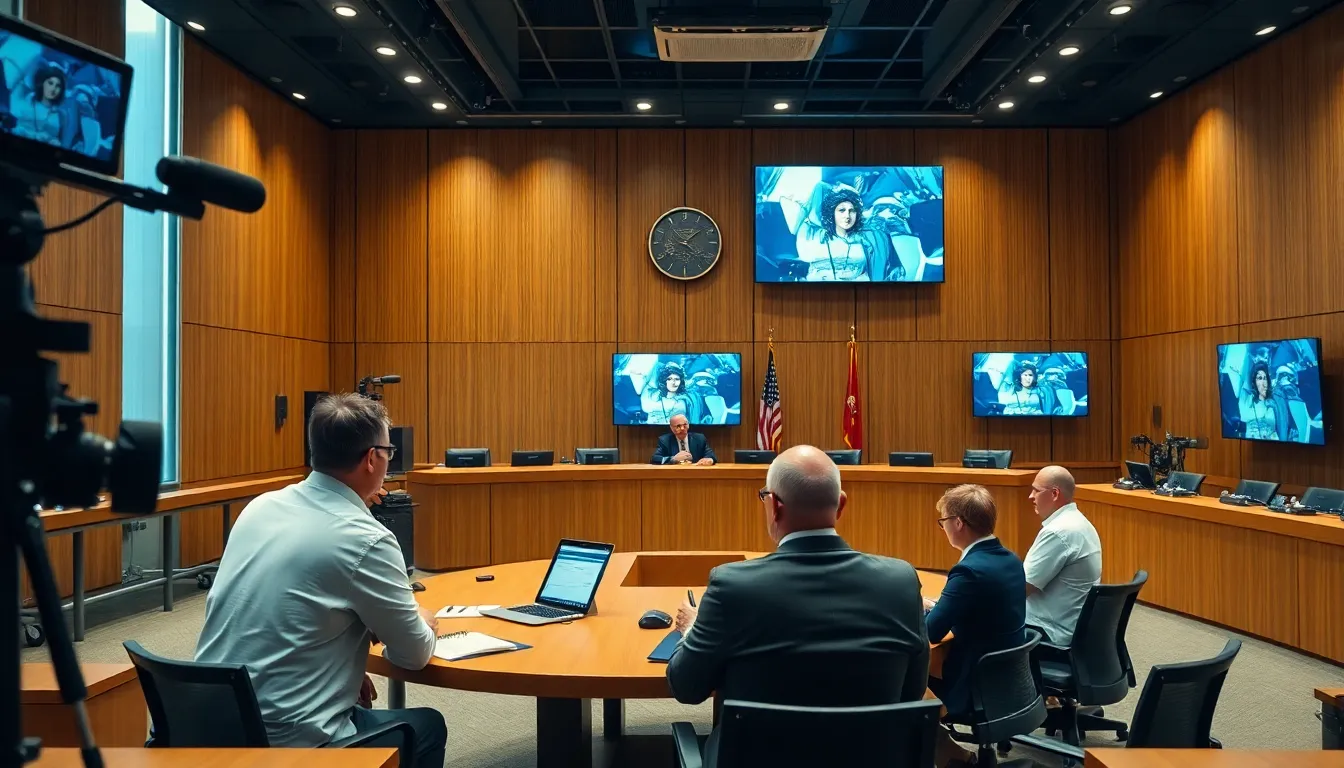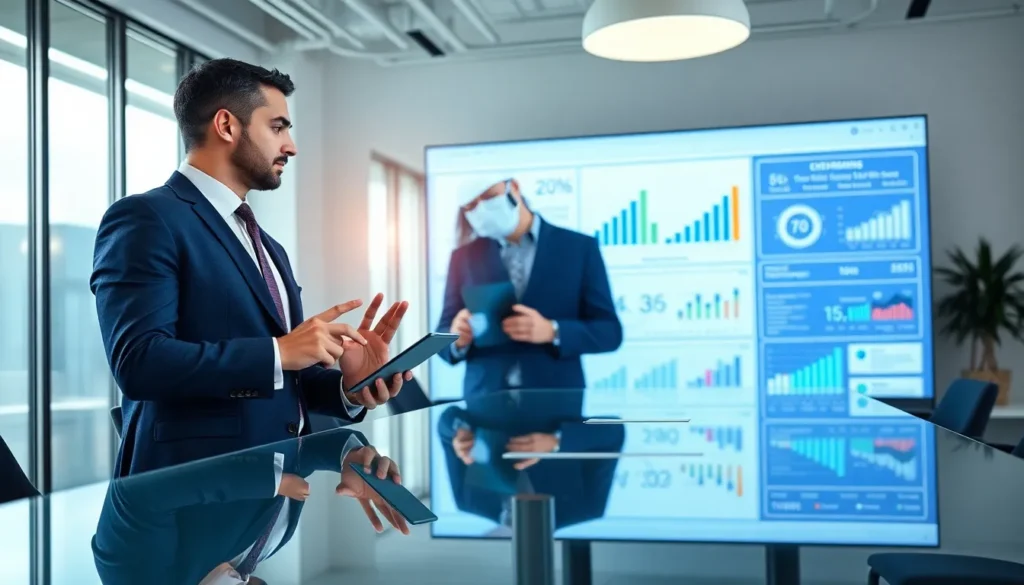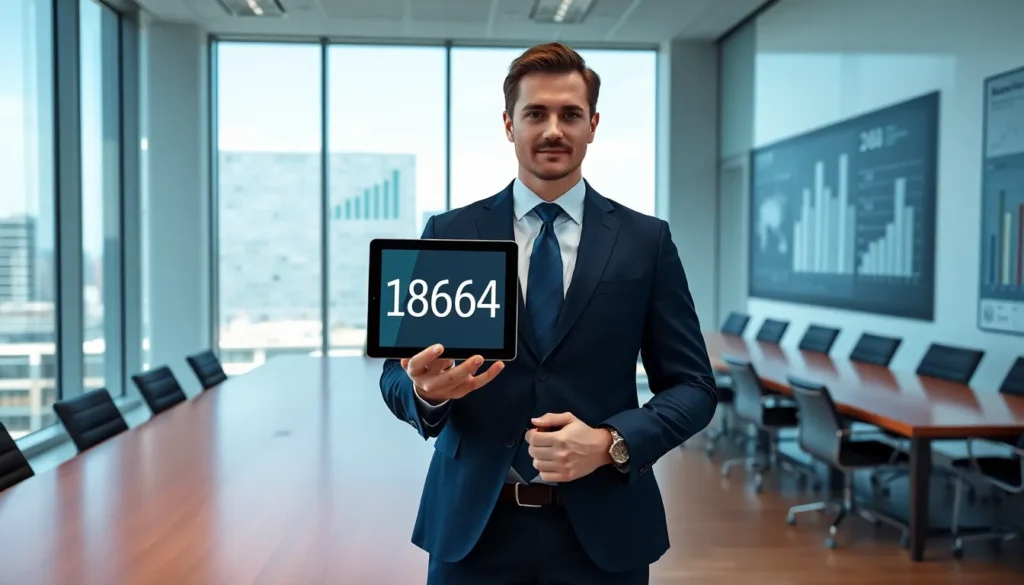Table of Contents
ToggleIn today’s fast-paced legal landscape, courtroom technology is transforming the way justice is served. From digital evidence presentation to advanced communication tools, these innovations streamline processes and enhance the overall efficiency of legal proceedings. As courts increasingly adopt cutting-edge solutions, both attorneys and judges find themselves navigating a new realm of possibilities.
These technological advancements not only improve the clarity and accessibility of information but also foster a more engaging environment for jurors. With tools like virtual reality simulations and interactive displays, courtroom experiences are evolving to meet the demands of modern society. Embracing these changes is essential for legal professionals aiming to stay ahead in a competitive field.
Overview of Courtroom Technology
Courtroom technology encompasses various tools that streamline legal processes, enhance communication, and improve evidence presentation. These technologies primarily include:
- Digital Evidence Presentation
Digital evidence tools use software and hardware to display documents, videos, and images in real-time. Presentations become clearer and more engaging for jurors, aiding their understanding of complex cases.
- Audio-Visual Equipment
Advanced audio-visual systems ensure high-quality sound and video during trials. These systems facilitate clearer communication among judges, lawyers, and jurors, reducing misunderstandings and errors.
- Case Management Software
Case management platforms organize case files, track deadlines, and streamline workflows. They allow legal professionals to efficiently manage information, leading to more effective preparations and presentations.
- Remote Communication Tools
Video conferencing technology allows participants to attend court sessions from remote locations. This flexibility increases accessibility for witnesses, legal representatives, and clients, ensuring cases progress without delays.
- Digital Filing Systems
Electronic filing systems replace traditional paper filing methods. These systems improve filing efficiency and reduce storage needs, enabling quick access to important documents.
- Virtual Reality Simulations
Some courts adopt virtual reality to recreate crime scenes or scenarios. Such simulations provide jurors with immersive experiences, enhancing their understanding of the evidence presented.
Adoption of courtroom technology requires ongoing training for legal professionals. Staying informed on the latest advancements ensures that they maximize the benefits of these innovations, ultimately elevating the quality of legal proceedings.
Types of Courtroom Technology

Courtroom technology enhances the efficiency and effectiveness of legal proceedings. Various types of technology play significant roles in improving information clarity and juror engagement.
Audio and Video Equipment
Audio and video equipment ensures clear communication during legal proceedings. High-definition video cameras capture testimonies and presentations, while advanced microphones enhance sound quality, minimizing disruptions. This equipment supports real-time demonstration of evidence, providing jurors with a comprehensive understanding of the case. Seamless integration of these systems improves the overall courtroom experience.
Digital Evidence Presentation
Digital evidence presentation tools facilitate the effective display of case-related materials. Software programs allow legal professionals to organize and present documents, images, and videos on large screens in real-time. This visual support aids jurors in grasping complex evidence quickly, increasing retention and comprehension. By utilizing digital evidence presentation, lawyers can articulate their arguments more persuasively and streamline courtroom proceedings.
Case Management Software
Case management software streamlines the organization and tracking of legal files. This technology enables legal professionals to manage case deadlines, deadlines, and communication in a centralized platform. Features such as document automation and task assignment enhance collaboration among team members, increasing productivity. Efficient case management reduces the risk of missed deadlines and improves overall workflow, allowing for more effective legal representation.
Benefits of Courtroom Technology
Courtroom technology offers significant advantages that improve the legal process. Enhanced efficiency, improved communication, and increased accessibility are just a few of the benefits that support the modern courtroom environment.
Enhanced Efficiency
Courtroom technology enhances efficiency through streamlined processes. Electronic filing systems reduce paper usage and make document retrieval faster. Digital evidence tools allow for real-time presentation of evidence, facilitating quicker case reviews. Automated scheduling software optimizes court calendars, minimizing delays and improving time management. By organizing case materials and enabling rapid access, legal professionals can focus more on strategy and arguments.
Improved Communication
Effective communication is critical during legal proceedings. Advanced audio-visual equipment ensures clarity, with high-definition cameras capturing visuals and microphones providing clear audio. This setup reduces misunderstandings and allows all participants to stay engaged. Video conferencing tools facilitate seamless communication between remote witnesses and legal teams, enhancing collaboration regardless of location. Overall, improved communication fosters a more transparent courtroom environment.
Accessibility for All Parties
Accessibility stands as a fundamental benefit of courtroom technology. Digital evidence presentation tools ensure all parties can view and understand the materials presented, including jurors, judges, and lawyers. Remote communication tools allow those unable to attend in-person to participate fully, maintaining inclusivity for witnesses and experts. Furthermore, digital filing systems ensure that essential documents are readily accessible to all stakeholders, thereby supporting equitable legal processes.
Challenges in Implementing Courtroom Technology
Implementing courtroom technology presents several challenges that legal professionals need to address effectively. Key areas include cost considerations, training requirements, and cybersecurity risks.
Cost Considerations
Cost remains a significant barrier to adopting advanced courtroom technology. Many court systems face budget constraints, limiting their ability to purchase and maintain sophisticated equipment. Initial setup expenses, along with ongoing maintenance and upgrade costs, can strain public resources. Jurisdictions must evaluate the return on investment for new technology while balancing immediate financial pressures with long-term benefits such as increased efficiency and reduced processing times.
Training and Education
Training and education play a crucial role in the successful integration of courtroom technology. Legal professionals need to develop the necessary skills to operate new systems effectively. Insufficient training can lead to underutilization of available tools, undermining the intended improvements in efficiency and communication. Courts should prioritize comprehensive training programs that address the diverse needs of staff and legal practitioners, ensuring everyone can leverage the technology’s full potential.
Cybersecurity Risks
Cybersecurity risks pose a considerable threat to courtroom technology. The increasing reliance on digital systems exposes sensitive legal information to potential breaches. Courts must implement robust security measures, including encryption and frequent software updates, to protect against unauthorized access. Additionally, fostering a culture of cybersecurity awareness among legal professionals is essential to mitigate risks and safeguard client confidentiality during legal proceedings.
Courtroom technology is reshaping the legal landscape in profound ways. By enhancing efficiency and improving communication, these tools are making legal proceedings more transparent and accessible. Legal professionals who embrace these advancements position themselves to better serve their clients and adapt to the evolving demands of the justice system.
While challenges like cost and cybersecurity must be addressed, the benefits of integrating technology into the courtroom are undeniable. Ongoing training and education will be essential for legal teams to maximize the potential of these innovations. As technology continues to advance, its role in the courtroom will only grow, paving the way for a more effective and equitable legal process.









